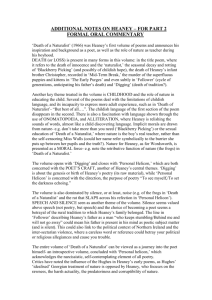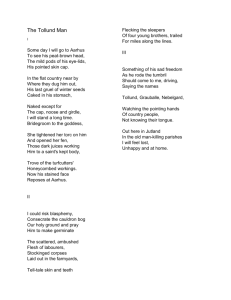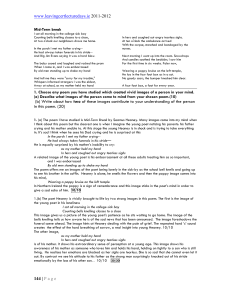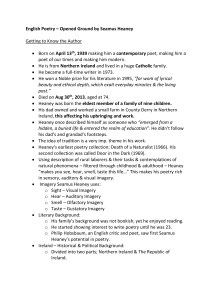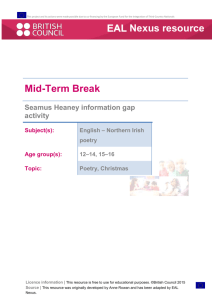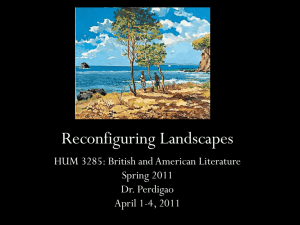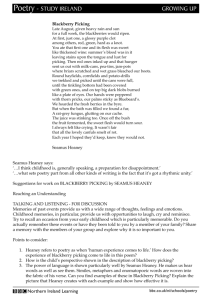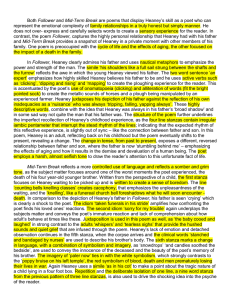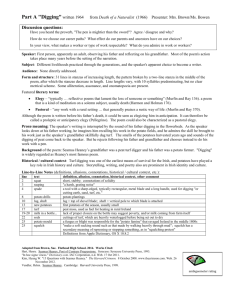Hints on Heaney
advertisement
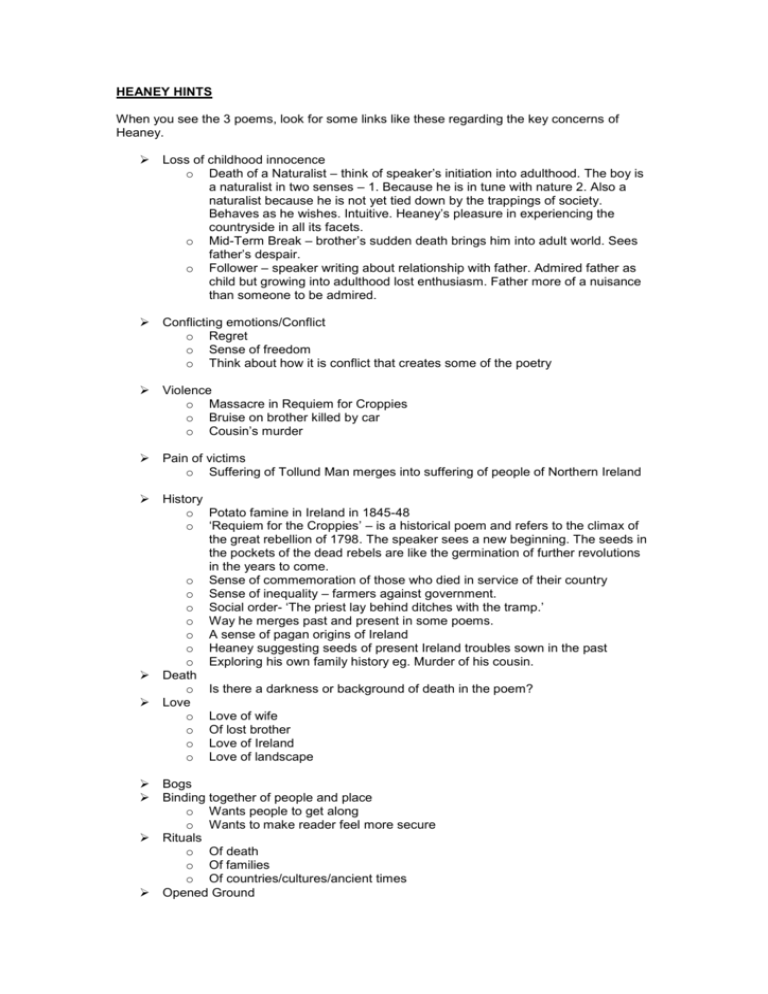
HEANEY HINTS When you see the 3 poems, look for some links like these regarding the key concerns of Heaney. Loss of childhood innocence o Death of a Naturalist – think of speaker’s initiation into adulthood. The boy is a naturalist in two senses – 1. Because he is in tune with nature 2. Also a naturalist because he is not yet tied down by the trappings of society. Behaves as he wishes. Intuitive. Heaney’s pleasure in experiencing the countryside in all its facets. o Mid-Term Break – brother’s sudden death brings him into adult world. Sees father’s despair. o Follower – speaker writing about relationship with father. Admired father as child but growing into adulthood lost enthusiasm. Father more of a nuisance than someone to be admired. Conflicting emotions/Conflict o Regret o Sense of freedom o Think about how it is conflict that creates some of the poetry Violence o Massacre in Requiem for Croppies o Bruise on brother killed by car o Cousin’s murder Pain of victims o Suffering of Tollund Man merges into suffering of people of Northern Ireland History o Potato famine in Ireland in 1845-48 o ‘Requiem for the Croppies’ – is a historical poem and refers to the climax of the great rebellion of 1798. The speaker sees a new beginning. The seeds in the pockets of the dead rebels are like the germination of further revolutions in the years to come. o Sense of commemoration of those who died in service of their country o Sense of inequality – farmers against government. o Social order- ‘The priest lay behind ditches with the tramp.’ o Way he merges past and present in some poems. o A sense of pagan origins of Ireland o Heaney suggesting seeds of present Ireland troubles sown in the past o Exploring his own family history eg. Murder of his cousin. Death o Is there a darkness or background of death in the poem? Love o Love of wife o Of lost brother o Love of Ireland o Love of landscape Bogs Binding together of people and place o Wants people to get along o Wants to make reader feel more secure Rituals o Of death o Of families o Of countries/cultures/ancient times Opened Ground o o o o Wounds of landscape Wounds of Irish history Remember words come from ‘Act of Union’ poem Uncovering emotions, events of past, personal concerns, honesty TYPE OF POEM Structure o Is it a ballad? Sense of a folk story? o Tight, even stanzas o Free flowing o Sections – Heaney labelling I and II o Enjambment o Caesura o What variations between the three poems? Pace o How is poem sped up? Slowed down? Punctuation o Question marks o Exclamation marks o Full stops o Commas o Colons or semi-colons o What is their effect? o Does use of punctuation vary between the 3 poems? Alliteration – matching consonants – actually specify them in your response Assonance – think about vowel sounds that give rhythm Onomatopoeia – harsh words, slippery words, loving words, Sounds Senses Imagery o Of the countryside Merging of Past with Present o Think of The Tollund Man where the murder of the four young men is linked to sacrificial death of The Tollund Man Naming of Places World of adult, world of child Voice of poet – first person, third person o Is poet detached? Is he close up? Feelings of speaker/poet – o Does he feel guilt? o Horror o Shame o Fear of young child o Insecurity o Sense of alienation Way Heaney brings opposites together Use of historical analogies


